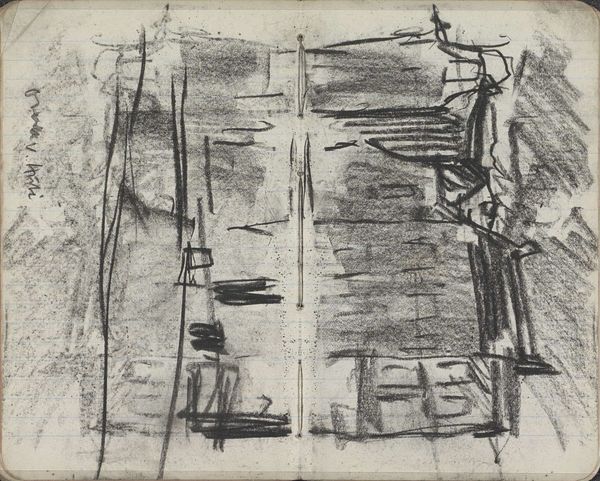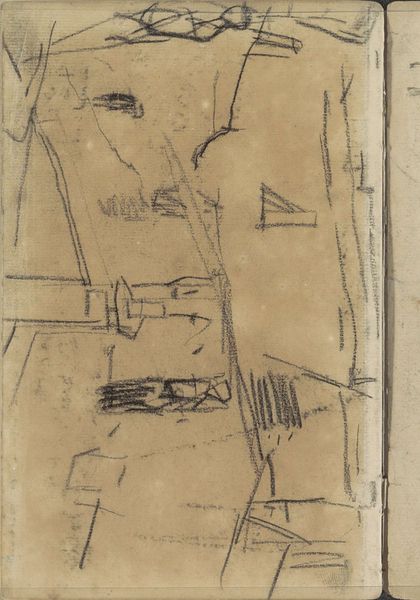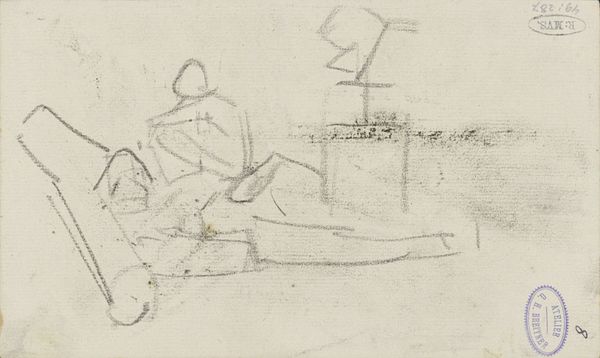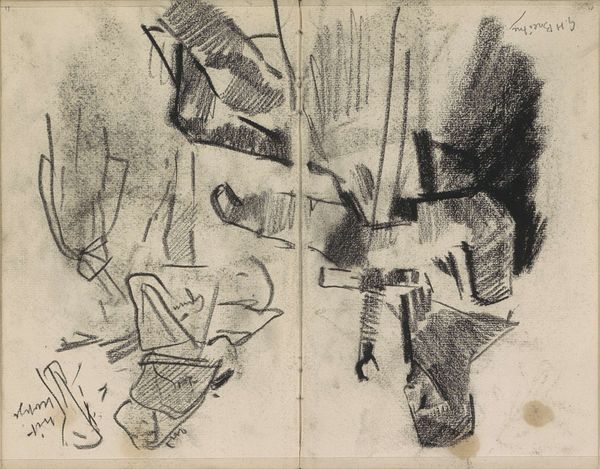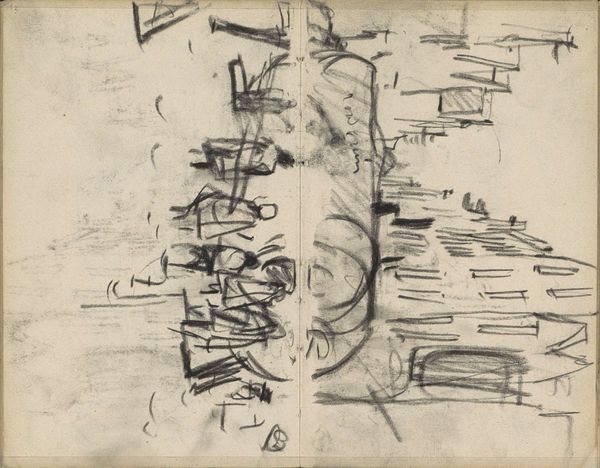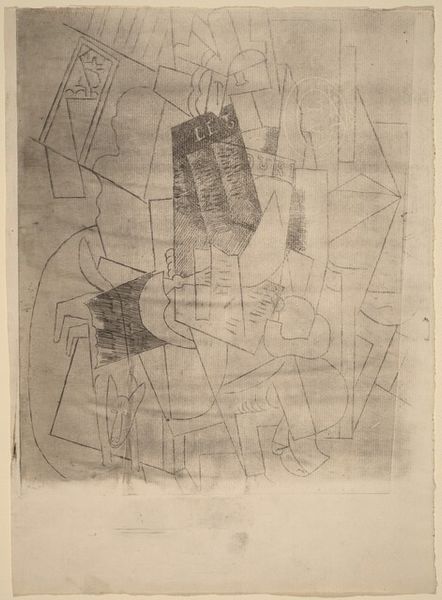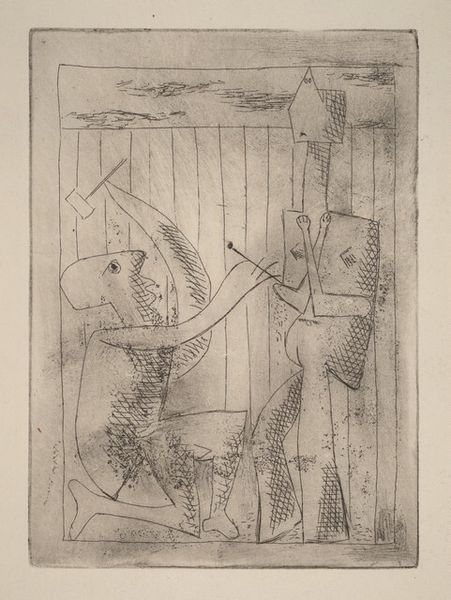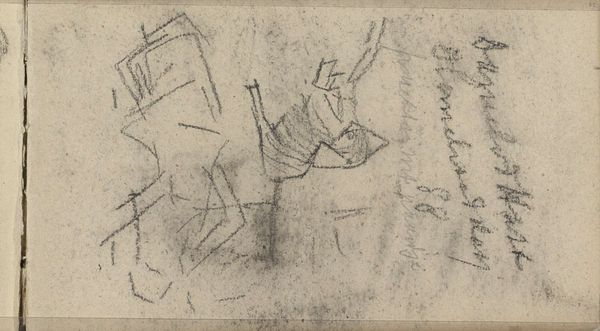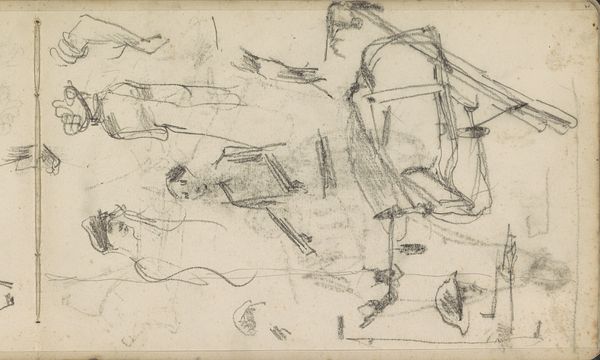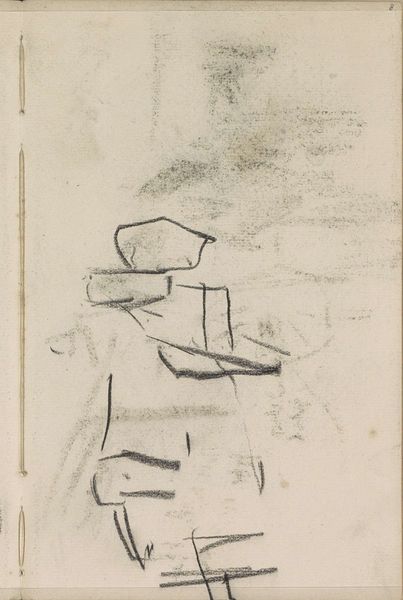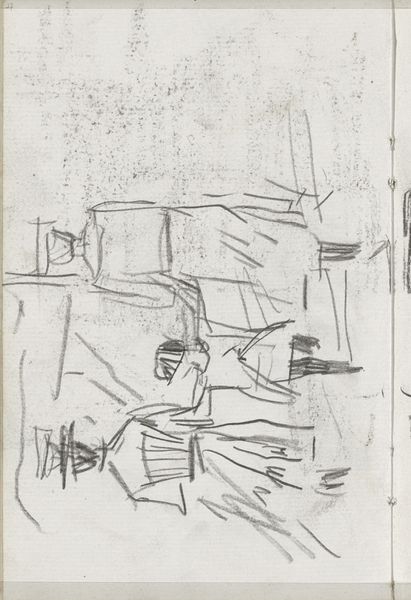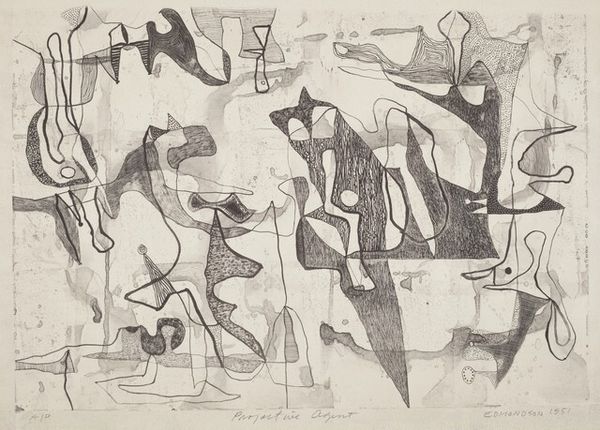
Copyright: Public Domain: Artvee
Editor: This is Ernst Ludwig Kirchner’s "Eishockeyspieler," created in 1935. It’s an etching, so a print, and the composition has a frantic, frenetic feel. It looks like the players are all movement and sharp angles. How do you interpret this work? Curator: Well, looking at "Eishockeyspieler" from a critical perspective, especially given Kirchner's Expressionist roots and the socio-political context of 1930s Germany, I can’t help but wonder what sport, and especially hockey, meant in that era. How did nationalistic fervor and anxieties shape the way people perceived teamwork and individual aggression? Editor: That’s a really interesting question, but I hadn't even considered the wider context! I was mainly focused on the aesthetic – the raw lines, the sense of motion… Curator: But see, that aesthetic is inherently tied to its time! Expressionism, in particular, was all about channeling inner turmoil and societal anxieties. Kirchner's use of jagged lines and distorted figures – do those read as simple "motion," or something more chaotic? Is it a celebration of athleticism, or something bordering on a critique? Editor: I see what you mean. Maybe it's both? The speed and excitement, but also a kind of underlying… aggression? Almost as if the game becomes a metaphor for something darker. Curator: Exactly. And considering the rise of fascism during Kirchner's lifetime, with its emphasis on physical prowess and national strength, how do we read this artwork as either promoting or subtly resisting such ideals? Even the act of portraying leisure—a sporting match—was never apolitical. Editor: Wow, I never would have gotten to any of that on my own. I’ll definitely look at Kirchner and Expressionism differently from now on. Curator: Remember, art isn't created in a vacuum. Question everything and bring historical and theoretical lenses. You will then discover multiple possibilities.
Comments
No comments
Be the first to comment and join the conversation on the ultimate creative platform.

